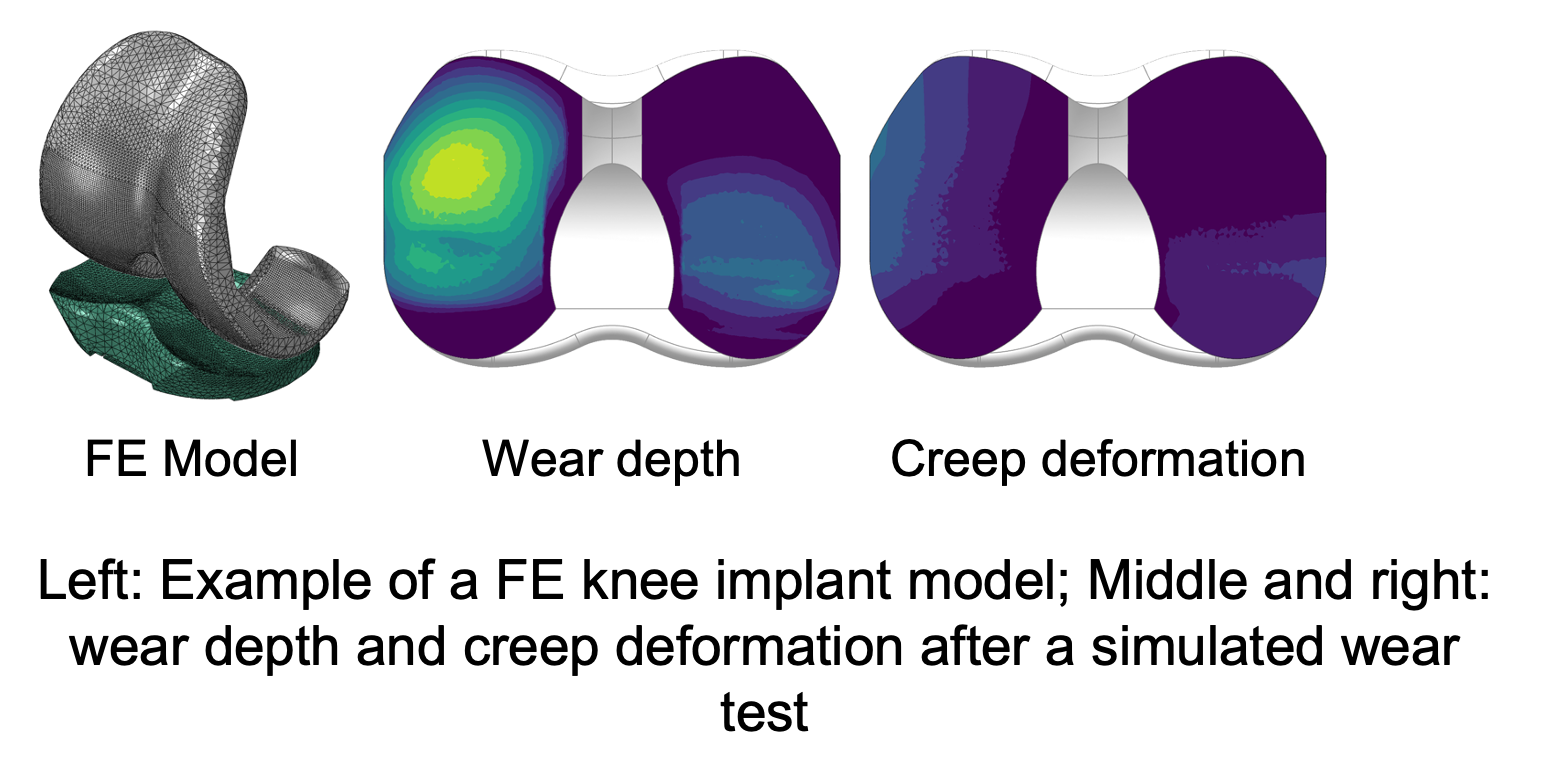Computational prediction of knee Implant wear
Background
A major concern of current knee implants is wear of the polyethylene (PE) inlay component that limits the longevity of otherwise clinically successful devices. To predict prosthesis wear, computational finite-element wear simulations have proven to valuably complement laboratory-based testing by being fast, cheap and repeatable.
Goal
The overall goal of this project is to develop finite-element models and tools to predict long-term wear of joint implants, specifically in the knee.
Method
We’re developing an algorithm to predict PE wear. PE wear depends on multiple factors including contact area and pressure, sliding path length, and cross-shear, a measure of the amount of crossing motion of the sliding path. Our models also account for creep deformation and the change in surface contour due to wear and creep.
These models will be validated with laboratory wear tests and analysis of retrievals, implant components routinely removed during revision surgery.
Ultimately, we aim to use our models to investigate clinical questions related to implant wear.
Collaboration
This project is a collaboration with the external pageLaboratory for Mechanical Systems Engineeringcall_made at Empa.
Contact
Professur f. Bewegungsbiomechanik
Leopold-Ruzicka-Weg 4
8093
Zürich
Switzerland

